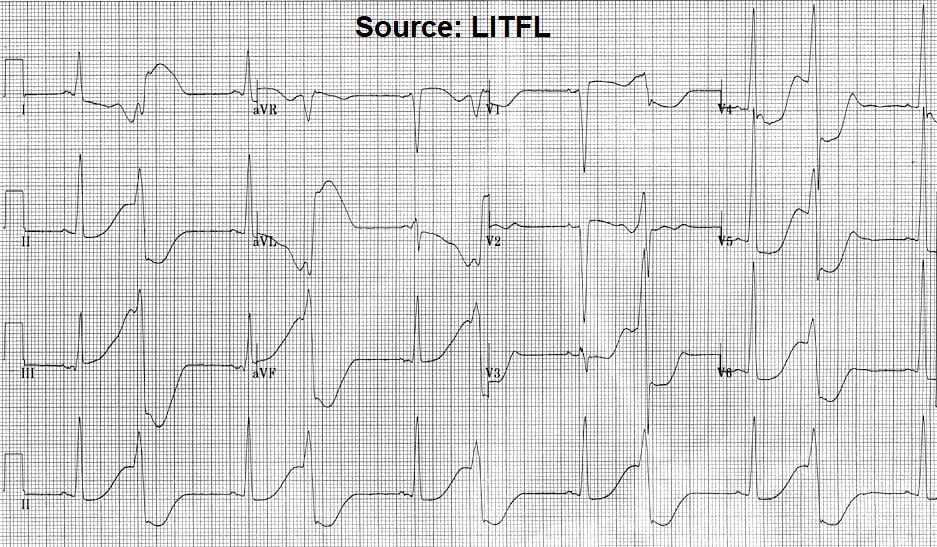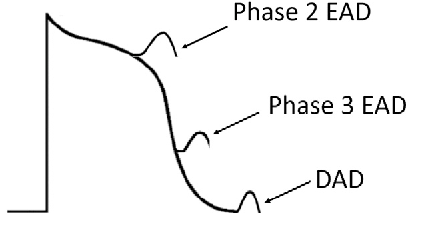A few months ago, I had the chance to study the rhythm changes leading up to an episode of Torsades. Discussed here -
This helped me pick up some "warning signs" that may help facilitate early recognition.
#tweetorial
(i) Prolonged action potential (long QT)
(ii) Early afterdepolarizations (EAD)
(iii) Dispersion of repolarization (DR)
(i)A long QT is essential but not sufficient. E.g. Amiodarone prolongs QT but reduces DR - low risk of Torsades.
Now let's focus on EADs. They are responsible for the "R" in the "R-on-T". They are also likely responsible for some of the EKG changes leading up to Torsades.
Found a similar example on LITFL - litfl.com/cardiac-megaco…
A few weeks later I had saw this pattern again in a patient who was started on scheduled Reglan. 2 g Mag over 10 minutes resulted in obvious improvement.

Side-note -
It's also important to not confuse this pattern with ischemia. Although the PVCs may have discordant ST changes, careful assessment of the sinus beats will be helpful.
(i) As telemetry is ubiquitous in the ICU, an astute pair of eyes may be able to 'see Torsades coming'
(ii) Pattern-recognition: Giant T-U waves (especially post-pause) +/- "bizarre" bigeminy
(iii) Once you see this, determine the QT/U. If prolonged start treatment!
Feel free to spread the word!









